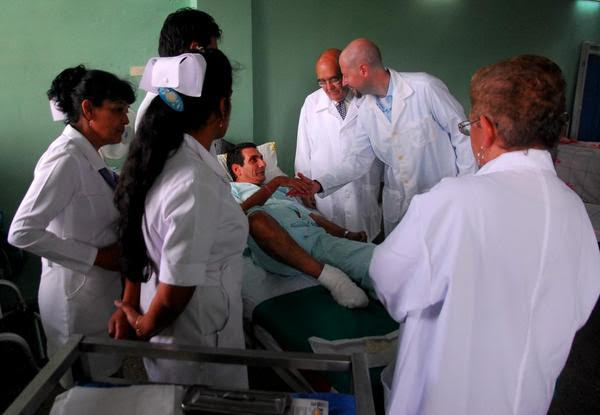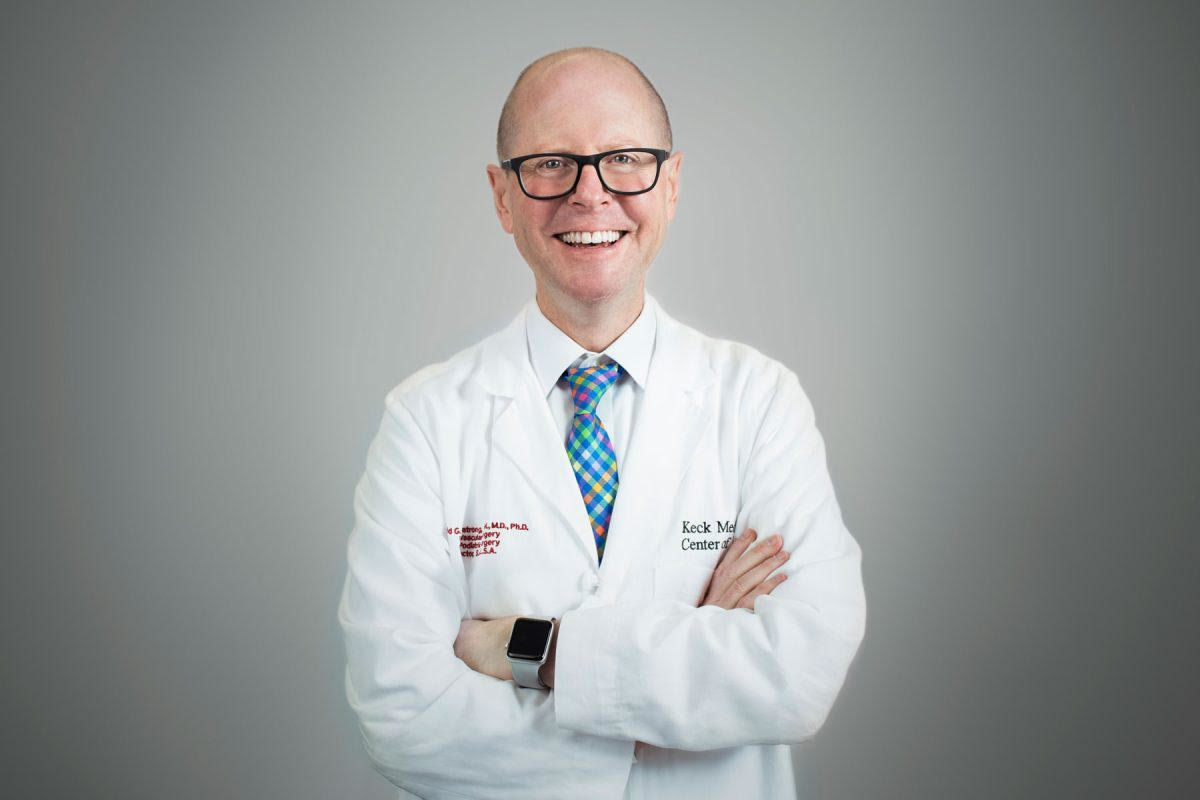The Diabetes "Hot Foot Line" Team Completes Clinical Study Showing Dramatic Success in Preventing Amputations in Patients with Foot Ulcers
The team will now advance its research through a five-year NIH grant to develop more advanced methods of treatment and care to help diabetes patients maintain their limbs and their health.

A 24-month pilot study championed and supported by the Southern California Clinical and Translational Science Institute (SC CTSI) has demonstrated that a novel multidisciplinary team-based system to treat diabetic foot ulcers can save countless patients from the trauma of amputation, and as a result live longer, healthier lives.
"We can say pretty unequivocally that we achieved a clinically and statistically significant reduction in the length of hospital stay for foot ulcer patients, and a dramatically and highly significant change in the kind of surgery that has been done on these patients," said team and investigation leader David G. Armstrong, Professor of Surgery at the Keck School of Medicine of USC. "Before, we would see a lot of reactive, ablative surgical procedures including high-level amputations. But with the new system we're seeing more proactive and reconstructive procedures that save limbs and work to preserve function."
These results are vitally important, not only because the loss of a limb is a traumatic and difficult experience that deeply impacts quality of life, but because patients who lose limbs face dramatically increased risk of ill health and death, with a five-year post-amputation mortality rate of more than 50 percent.

The pilot study was conducted by a novel multidisciplinary team-based clinical triage and treatment system spearheaded by Armstrong. The so-called "hot foot line" limb preservation team brings together the various specialties involved in treatment of the diabetic foot ulcers—including vascular and podiatric surgery, endocrinology, nursing, and specialized shoe and orthotic construction. Team members work together closely, often in a single location, to assess and treat patients in hours and days, rather than weeks or even months.
(Read more about the diabetes treatment and triage team here.)
Because "time is tissue" in the treatment of foot ulcers and the stubborn infections that often set in, explained Armstrong, the quick and coordinated team approach can make the difference between the loss or preservation of a patient's limb. The team's systems also enabled care to be completed through faster and less costly outpatient procedures, which are typically safer and less disruptive for patients. In fact, the study also reported significantly faster time to the operating room after development of the limb preservation program.
To complicate matters, the COVID-19 pandemic struck in the middle of the study, making it more difficult for the foot-care team to conduct its work and care for patients. "Even with all of the unprecedented activity and restrictions of the pandemic, we have seen a remarkable improvement in care, thanks to the team," said Armstrong. “I credit team leaders like podiatric surgeon Tanzim Khan, DPM, and vascular surgeon Ken Ziegler, MD. They’ve been extraordinary.”
Armstrong, who has assembled and run such teams around the U.S. and internationally, has been developing the ulcer care system with colleagues in Southern California since joining the USC faculty in 2017. The USC Department of Surgery recruited Armstrong to the Keck faculty expressly to develop the system in the region, which he has done with colleagues at USC and UCLA.
SC CTSI director Thomas Buchanan, MD, recommended Armstrong's application for pilot support from the DHS-CTSI Implementation Science Awards program, which is conducted jointly by the UCLA Clinical and Translational Science Institute, the SC CTSI and the Los Angeles County Department of Health Services (LAC DHS) to promote interventions and enhance the quality, efficiency and patient-centeredness of care provided by the LAC DHS.
Armstrong and his co-investigators were recently awarded a five-year NIH RO1 grant to advance the foot ulcer treatment program. Their work and study will be centered at Keck and the Rancho Los Amigos National Rehabilitation Center in Downey, Calif., an LAC DHS facility noted for its experience and expertise in diabetes care.
Their NIH-funded study will also assess new technology, including wearable devices such as "smart boots" that link to cloud computing and communications.



